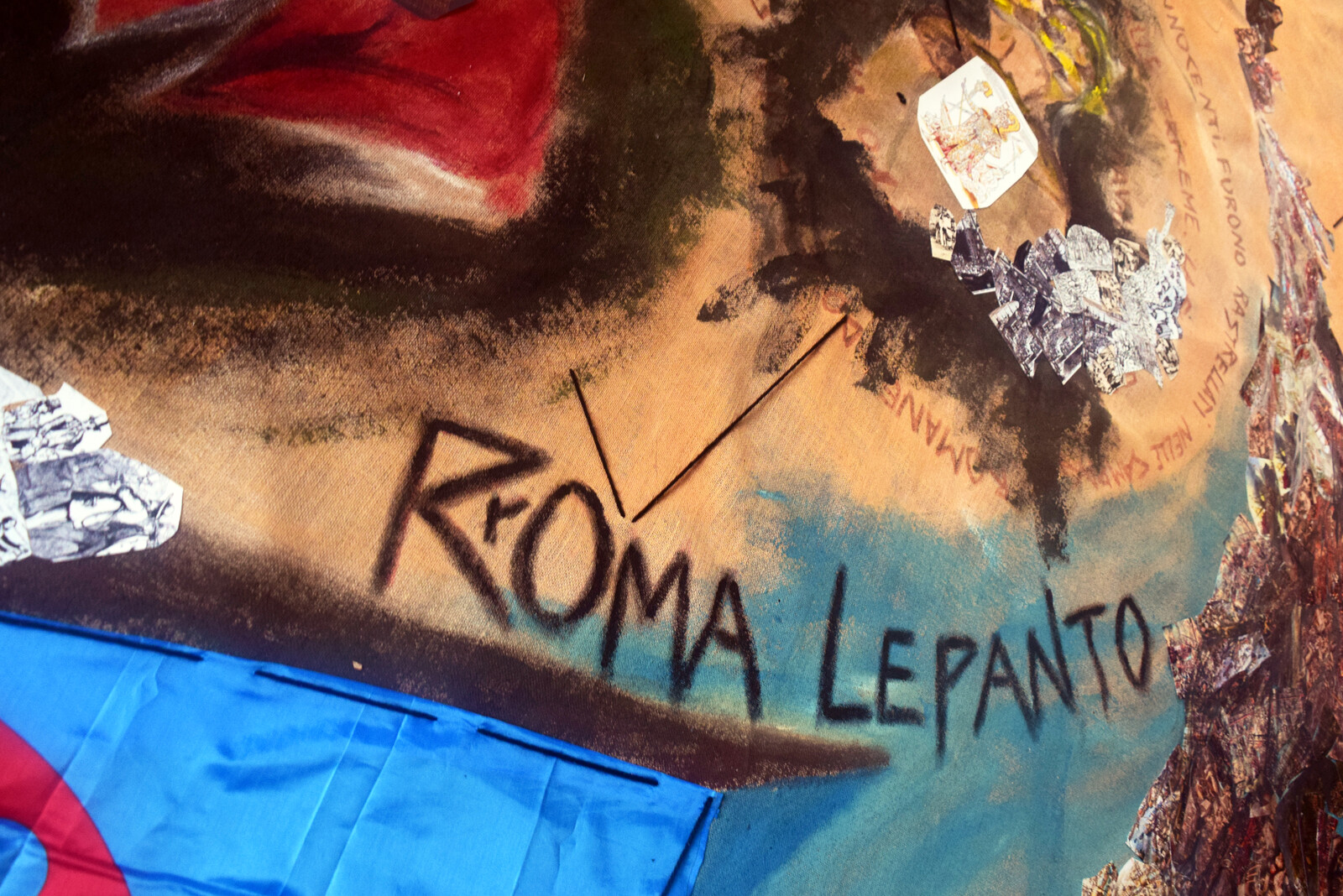April 20–November 24, 2024
Docks Cantieri Cucchini, San Pietro di Castello
Participating artists: Luna De Rosa, Manolo Gómez Romero, Dariya Kanti, Damian Le Bas, Brunn Morais, Girolamo Porro, Alfred Ullrich, Kálmán Várady
There have been several exhibitions of Roma contemporary art in the frame of the Venice Biennales, namely in 2007, 2011, 2019, and 2022. These instances represent the greatest efforts ever made by Roma to showcase Roma culture at the center of contemporary cultural diplomacy. The European Roma Institute for Arts and Culture (ERIAC) has been the commissioner of FUTUROMA (2019) and The Abduction from the Seraglio (2022) Roma exhibitions, official collateral events of the Venice Biennale. They embarked on a search for a sense of community for Europe’s largest minority—12 million Roma—reclaiming their belonging as part of the continent’s past and future. In this journey of permanent tension between the poetic and the political, between the social and the artistic, bringing Roma presence to Venice represented a colossal undertaking on behalf of the organizers, and the community itself. Visionary leaders, catalysts of the Roma cultural movement continuously returned to Venice to present art of the highest quality standards and to change perceptions: challenging the dominant stereotypes, by highlighting the enormously rich contributions of Romani arts and culture to European societies.
As Roma do not represent any nation-state, and due to the lack of a permanent infrastructure that would host the Roma, ERIAC supports initiatives that draw on the achievements of the first Roma Pavilion, “Paradise Lost” (2007).
Building on this legacy, RrOMA LEPANTO refers to the naval Battle of Lepanto (1571), highlighting the role of enslaved Gitanos from Spain and Roma from Italy, tasked with rowing the vessels. The site-specific installation initiates a discourse concerning the (in)visibility and recognition of Roma contributions to European history and societies. The choice of the exhibition venue is deliberate: the show takes place at Palazzo Bembo, as Giovanni Bembo served as commander during the battle, which culminated in the triumph of the Holy Alliance.
RrOMA LEPANTO is a project of Foundation Kai Dikhas, in collaboration with ERIAC, the Documentation and Cultural Centre of German Sinti and Roma, and the European Cultural Centre.
Curators: Moritz Pankok and Miguel Ángel Vargas Rubio
The OTHER SESSION—Artistic Freedom Under Scrutiny—, is an open art form involving a performative panel, artists, curators, and political representatives, meant to assess the landscape of artistic freedom, through dialogues and performances in light of 70 years of the European Cultural Convention. It critically examines and deconstructs the notion of national pavilions, questioning the extent to which a new space is necessary that operates on the fringes, outside of state interests and market logic. The project ultimately looks towards the establishment of an alternative pavilion, an ‘Other’ Pavilion, to host silenced and neglected voices, practices, ideas, and critiques emerging from the world of art and design.
The OTHER SESSION—Artistic Freedom Under Scrutiny—is presented by the Experimental Observatory on Artistic Freedom (OOAF) in collaboration with the Council of Europe (CoE).
Contributors: Gabriel Fontana, Timea Junghaus, Hicham Khalidi, Katalin Krasznahorkai, Antonio Manuel, Massimo Mazzone, Lesia Pcholka, Annalisa Rimmaudo, Manuel Borja-Villel
Curators: David Liver and Michael Kaethler
ERIAC continues to forge partnerships in which artistic creativity plays a central role in the transformation of societies, by creating spaces for criticism and reflection and leading the European community to a better understanding of each other. We continue to support initiatives that mitigate the need for a permanent Roma Pavilion as a platform to display experimental cross-disciplinary work of Roma. We do this with the firm belief that artists of Roma origin and their artworks transgress mere ethnic labels and at the same time, create new associations of Romani-hood. In an increasingly divided Europe, we are convinced that these gestures feel all the more pertinent, to build a sense of unity in plurality of forms and identities





